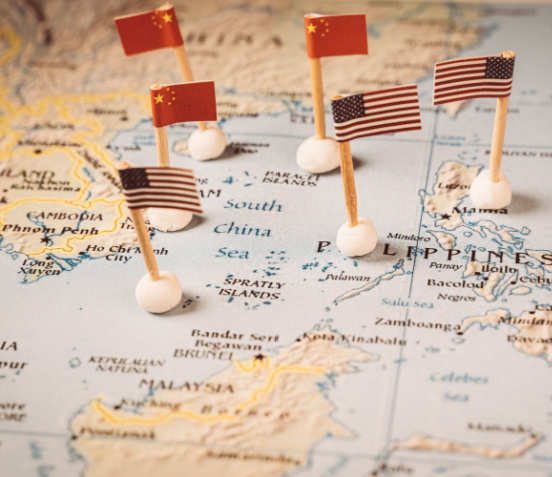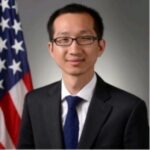The recently concluded Shangri-La Dialogue (SLD) was widely covered in international media as a tense standoff between the United States and the People’s Republic of China (PRC), with dueling narratives from US Secretary of Defense Lloyd Austin and PRC Defense Minister Li Shangfu (李尚福). The media also extensively covered Beijing’s refusal to conduct any private discussions between Austin and Li on the sidelines of the SLD (as had been requested by the United States), ostensibly over the fact that Li was sanctioned by the United States in 2018.
However, the PRC’s disinterest in regular military communications with the United States has been a long-term issue, even prior to the rise of a more aggressive PLA during the Xi Jinping (習近平) era. Established military exchanges are routinely used as a symbolic reward-punishment mechanism by the Chinese Communist Party (CCP, 中國共產黨) and thus have been subject to frequent “freezes.” Hotlines such as the Defense Telephone Link are rarely used, as PLA leaders are not empowered to make immediate crisis decisions. Thus, the coverage regarding the blame game over the lack of military communications misses a more concerning trend that was demonstrated during the summit.
Over the last year, the number of unsafe intercepts and maneuvers by the PLA have markedly increased—not just against the United States, but also against Canada and Australia. In the days before the summit and during the summit itself, the PLA conducted a series of unprofessional, risky maneuvers in the Taiwan Strait and the South China Sea against US aircraft and ships; then, at his summit speech, Li talked about preventing “hegemony of navigation,” while former PRC Ambassador to the United States Cui Tiankai (崔天凱) added that the United States needed to “ease off military deployments close to China” if the United States wanted military communications. In short, the PRC has adapted gray zone warfare concepts, previously used against Taiwan, to work against an international audience.
In this article, I will discuss how the PRC has changed its messaging strategy at international forums such as SLD, and how unsafe military maneuvers are integrated into its strategy. Finally, I will consider some of the implications of this “talking while fighting” strategy for the US and Taiwan.
Jaw-Jaw as a Form of War-War
The SLD, hosted annually in Singapore by the International Institute of Strategic Studies (IISS), is Asia’s premier ministerial defense summit. Since 2002, it has afforded the opportunity for “national leaders, ministers, and policymakers from across the Asia-Pacific, North America, Europe and the Middle East to gather together to discuss the most pressing regional security issues and to share policy responses.” The forum is designed for defense ministers to outline their vision of Indo-Pacific security, while providing space for bilateral discussions.
In a timeline that mirrored its rise as a great power, the PRC first participated in 2007 by sending a deputy chief of general staff, and in 2011 the PRC defense minister attended for the first time. (However, it is important to note that the PRC defense minister holds a state, and not party role, and serves as the international face of the Chinese Communist Party’s armed wing—without the negotiation powers and authorities usually given to other defense ministers or secretaries).
This was followed by an eight-year hiatus of high-level representation, as the PRC tried to supplant the Shangri-La Dialogue with its own Xiangshan Forum. With the failure of that attempt, the PRC has sent its defense minister to the SLD since 2019, all while lambasting the SLD as a “treacherous trap” used by the United States and its “petty followers” to smear the PRC.

Image: PRC Defense Minister Li Shangfu shakes hands with US Secretary of Defense Lloyd Austin at the SLD, 2 June 2023. While the United States requested a meeting between the two at the SLD, the PRC refused, variously citing the 2018 US sanctions on Li or a more general need to “work practically to respect China’s sovereignty.” PRC military diplomacy prioritizes symbolism and information warfare, versus engagement and risk-reduction. (Source: Frontline)
Accordingly, PRC participation at the SLD has been traditionally defensive in tone and reflexive in substance; the speeches usually given by the defense minister have not been significantly different from the lower-level PLA press conference rebuttals to the US defense secretary speech. Li’s remarks at the 2023 SLD were also defensive in tone, with the standard grievances about the United States’ presence in Asia, its alliance network, and engagement with Taiwan. However, it was not reflexive in substance. He combined these grievances in a coherent, strategic message to advocate a “new path to security” through the PRC’s alternative to the US-led world order: the “Global Security Initiative” (GSI, 全球安全協定).
The GSI was first rolled out by Xi at the Boao Forum (博鰲亞洲論壇) in April 2022, with few details other than that it represented Xi’s vision of future global security, a security counterpart to the alternate global economic vision of the Belt and Road Initiative (BRI, also known as “One Belt, One Road,” 一帶一路). Over the last year, the GSI has been fleshed out, with “six commitments” to replace the current rules-based world order:
- Maintaining common, comprehensive, cooperative and sustainable security;
- Respecting the sovereignty and territorial integrity of all countries;
- Respecting the purposes and principles of the United Nations charter;
- Peacefully resolving differences and disputes between countries;
- Maintaining security in traditional and non-traditional domains; and
- Upholding “indivisible security.”
These commitments seem to be milquetoast statements. However, two major elements of the GSI indicate a broad intent. The first of these is their derivation from existing propaganda. For instance, Commitment 6, “upholding ‘indivisible security’,” was originally a Russian propaganda phrase used by Russian President Vladimir Putin to justify his war on Ukraine. Xi explicitly mentioned this phrase in the initial rollout in April 2022, while think tanks of both the PRC Ministry of Foreign Affairs and the Ministry of State Security have written concept papers blaming the US for causing the Ukraine war by ignoring Russia’s “legitimate concerns” over its “indivisible security.”
Second, PRC descriptions of the GSI indicate that it is seen as an “international projection” of Xi’s 2014 Comprehensive National Security Concept (CNSC, 總體國家安全觀). The CNSC expanded the party’s definition of national security to cover sixteen major areas, essentially empowering state security organs over all of domestic society. In the GSI’s case, Commitment 5 is aimed at legally justifying the international deployment of PRC law enforcement assets—the infamous covert “overseas police stations”—as “maintaining security in a non-traditional domain.”
Thus, GSI’s intent is to replace the current US-led world order with a 19th-century style sphere of influence model. Given this goal, GSI’s international rollout has not proven to be popular on its own merits. Instead, the PRC is now seeking to use dangerous activity to persuade its regional neighbors, as well as the United States, that upholding the rules-based international order is not worth the potential cost.
Using the Risk of Military Confrontation as a Weapon
On May 26, a USAF RC-135 surveillance aircraft operating in the South China Sea was intercepted by a PLA Air Force (PLAAF) J-16 fighter. These interceptions happen frequently, and for the most part, professionally. In this case, however, the J-16 rapidly cut across the nose of the much slower RC-135, which subjected the RC-135 and its crew to significant turbulence.

Image: PLA Air Force J-16 fighter flying in front of US Air Force RC-135V Rivet Joint surveillance aircraft, 26 May 2023. The lumbering RC-135 was conducting routine operations over the South China Sea when the PLAAF fighter cut across the nose of the RC-135, forcing it to fly through significant wake turbulence. (Source: US Department of Defense)
The dangerous PLAAF maneuver in May was followed by a similar incident involving the PLA Navy two days before Li’s Shangri-la speech. During a standard bilateral (US and Canada) Taiwan Strait transit, a PLA Navy destroyer cut in front of the USS Chung-Hoon. The PLAN destroyer announced this move over the radio, and demanded that the US Navy ship alter course to avoid collision.
In both cases, the PRC anticipated some level of US response, and rolled out both a domestic and external media campaign. The PLA and the Ministry of Foreign Affairs all rapidly came out with statements that the PLA acted professionally; that the United States had made a “provocation” by “intruding” into areas where the PLA was operating; and that it was the United States that should follow “international law and agreements.” The PRC media also quickly followed with a narrative that US highlighting of these unsafe behaviors was meant to provide “ammunition” for the secretary of defense’s Shangri-la speech. The irony is that the PRC military, political, and media engagement over these incidents has shown considerably more coordination to further PRC goals during the SLD. This contrasts greatly with the shambolic messaging during the PRC spy balloon incident, which caught party leadership off-guard.
This type of unsafe behavior from the PLA has escalated over the last two years. This has been true not just against American aircraft, and in places far away from even the PRC’s vastly expanded definition of what constitutes PRC territorial waters. Canadian forces have also reported a spike in dangerous behavior, as have the Australians. Interestingly, the dangerous intercepts against the Canadian aircraft were done while the Canadians were conducting operations as part of a multinational, UN-approved effort to prevent North Korean sanctions evasion. Similarly, some of the dangerous behaviors exhibited by the PLA against the Australians—in this case, a PLA Navy ship illuminating a P-8 surveillance aircraft with a laser— were conducted in Australia’s own Exclusive Economic Zone (EEZ).

Image: PLA Navy guided missile destroyer CNS Suzhou (蘇州) cuts across the bow of US Navy guided missile destroyer USS Chung-Hoon (June 2, 2023). The USS Chung-Hoon and the Canadian HMCS Montreal were conducting a bilateral transit through the Taiwan Strait when the PLAN ship maneuvered in front of the US ship, coming within 140 meters of collision. (Source: US Navy)
Implications
US messaging over these incidents has remained the same over several decades, particularly since the April 2001 EP-3 incident, wherein an amateurish PLAAF J-8 pilot engaging in highly dangerous maneuvering ultimately crashed into a US Navy EP-3. The US military tends to characterize PLA dangerous behavior as “unsafe and unprofessional” while calling for greater military communications to reduce miscalculation, or employing military channels such as the Military Maritime Consultative Agreement (MMCA) to discuss “rule of behavior.” While these incidents are unsafe, from a PRC perspective they are not unprofessional at all: the PLA has been ordered to leverage operational risk to create a tense strategic environment. The party can then play up the possibility of a dangerous confrontation as the result of the US or coalition defense of the existing rules-based order. These incidents must be considered in light of the concurrent escalating PLA maneuvers and incursions around Taiwan. While the PLA has been much more cautious about the use of risky air intercepts at this sensitive flashpoint, there are signs that this, too, is changing.
For the United States and Taiwan, then, there should be a focus on developing a coordinated messaging campaign against this type of aggressive PRC behavior. This should be part of a greater cost-imposition strategy as the PRC attempts to expand the GSI, and redefine international laws to warp the rules-based order into an order based on sphere of influence. Finally, both the US and Taiwan will need to develop coordinated standard operating procedures in case the PLA does miscalculate and drag the region into a crisis.
The main point: The PRC is accelerating a campaign to actively replace the rules-based world order with a Beijing-led sphere of influence model. PLA aggressive maneuvers should not be seen as a symptom of an “unprofessional” military, but rather as a part of a deliberate attempt to use operational risk to undermine efforts to safeguard the rules-based international order. The United States and Taiwan should consider a messaging and cost-imposition strategy to deter the PLA from expanding this campaign further.





